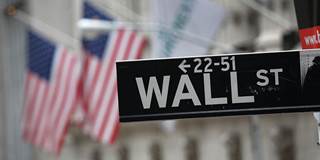Almost exactly eight years ago, the Lehman Brothers collapse plunged the entire industrialized world into the worst crisis since the end of World War II. The crisis still has not been fully overcome, because monetary policy preempted the creative destruction that could have formed the basis for a new upswing in growth.
MUNICH – Almost exactly eight years ago, the Lehman Brothers collapse plunged the global economy into recession. The interbank market collapsed, and the entire industrialized world was thrown into the worst crisis since the end of World War II. Though central banks have maintained ultra-low interest rates, the crisis hasn’t yet been fully overcome. On the contrary, numerous economies, such as the southern European countries and France, simply aren’t making any headway. And Japan has been on the ropes for a quarter-century.
Some economists believe that this is evidence of “secular stagnation,” a phenomenon described in 1938 by the American economist Alvin Hansen, who drew on Karl Marx’s Law of the Tendency of the Rate of Profit to Fall. Owing to the gradual exhaustion of profitable investment projects, according to this view, the natural real interest rate has continued to fall. Stabilizing the economy thus is possible only by an equivalent decline in policy interest rates.
In view of the huge credit bubble that preceded the crisis in Japan, the United States, and southern Europe, and the aggressive policies pursued by central banks over the last few years, I doubt that this theory is correct. In fact, I find it plausible that a very different mechanism lies behind the post-2008 stagnation, which I refer to as “self-inflicted malaise.”

MUNICH – Almost exactly eight years ago, the Lehman Brothers collapse plunged the global economy into recession. The interbank market collapsed, and the entire industrialized world was thrown into the worst crisis since the end of World War II. Though central banks have maintained ultra-low interest rates, the crisis hasn’t yet been fully overcome. On the contrary, numerous economies, such as the southern European countries and France, simply aren’t making any headway. And Japan has been on the ropes for a quarter-century.
Some economists believe that this is evidence of “secular stagnation,” a phenomenon described in 1938 by the American economist Alvin Hansen, who drew on Karl Marx’s Law of the Tendency of the Rate of Profit to Fall. Owing to the gradual exhaustion of profitable investment projects, according to this view, the natural real interest rate has continued to fall. Stabilizing the economy thus is possible only by an equivalent decline in policy interest rates.
In view of the huge credit bubble that preceded the crisis in Japan, the United States, and southern Europe, and the aggressive policies pursued by central banks over the last few years, I doubt that this theory is correct. In fact, I find it plausible that a very different mechanism lies behind the post-2008 stagnation, which I refer to as “self-inflicted malaise.”